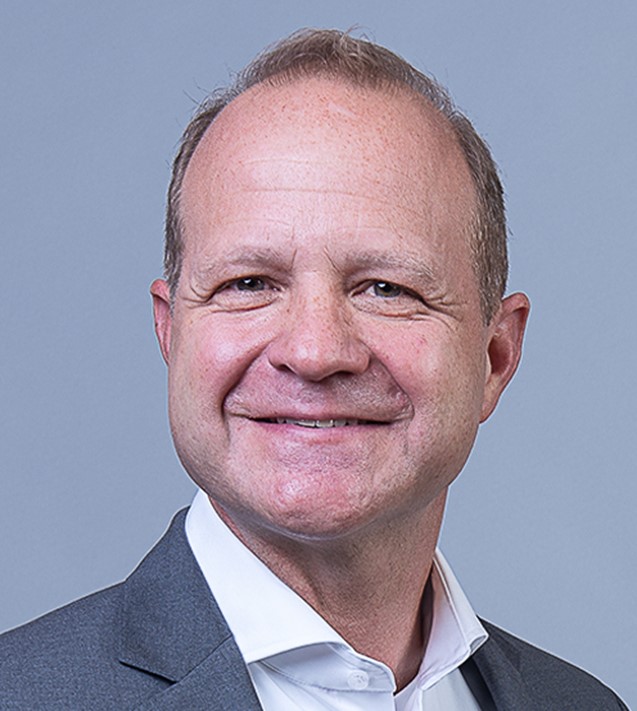A Client-centric Approach to ESG to build a Competitive Advantage in Asia
This article was written and summarised from a closed-door discussion with leaders from the Finance Industry. Exclusive Partner: Finalix Business Consulting, represented by Dr Marcus Fenchel, Transformation Expert for Sustainable Finance and Corporate Responsibility. The event was attended by selected decision-makers at private wealth management institutions in Singapore, and was held on an entirely off-the-record basis, as an open forum to help further knowledge and drive debate. This is a summary of the key insights and observations.
Family offices look beyond financial gain in investments as they define what a legacy means.
Representatives from Asian family offices shared that considering non-standardised ESG taxonomy, undefined regulations and the wide range of available frameworks, there is no one correct way to approach ESG. While these reasons are often raised as challenges, family offices see this as an opportunity to define their own measures of impact in accordance with family values and broad societal objectives. It is observed that the younger generation look beyond quantitative financial returns to qualitative impact. In one family office, the charter was drafted with specifications on how the family interacts with society, run their businesses and investments.
“The family focuses on impact, and don’t like the whole ESG alphabet soup,” he reported. “But as I see it, ESG is investing in a positive way. There are many discrepancies between different ESG methodologies, but we like to focus more on better due diligence and the right approaches as our guiding lights. As we see it, we need to have a systematic framework for making a positive impact on the world. We want to see financial and qualitative impact from the managers we work with.”
Head of a Malaysian Chinese Family Office with a long heritage in the region
That said, altruism needs its own dose of practical realities. As one family office puts it, “On the environment, it is more likely we will see the planet two degrees hotter. This means positioning investments for that climate change.” The best risk optimising strategy is to assume that there will be climate change and environmental damage, directing investments towards technologies that would possess the ability to mitigate the climate transition risks.
Relationship managers remain apathetic towards ESG
While it is recognised that Relationship Managers (“RMs”) need to have more intelligent and informed discussions with clients on ESG, RMs are looking to their own institutions for guidance. As one private banker states, “Institutions often have approaches that are technical and prescriptive in terms of suitability of products for clients. (In our firm), account opening forms have a section on ESG that RMs can engage clients on”. This approach, however, does not encourage a dynamic discussion on the topic. Instead, it forces clients to go in a direction they do not want to go or feel uncomfortable with, because they do not understand the highly technical concepts presented. In both cases, the aim of more intelligent and informed discussions will be missed.
“The ESG wave is building, and we need to be having more informed and intelligent discussions with clients about this topic. I encouraged RMs to take on the course (CFA’s ESG Investing). While team members did not attend, I did, and found it fascinating. And we all know this is a topic that is dominating almost every wealth management conference these days.”
A CEO of a Private Bank operating in Asia illustrated his difficulty in getting RMs certified under CFA’s ESG Investing.
On the flip side of the same coin, Asian clients are not actively engaging on ESG metrics and concepts. Instead, financial performance remains the primary expectation of investment decisions. Consequently, RMs are unwilling to promote products that do not stand against the test of financial performance regardless of how sustainable they may be.
That said, it was agreed that for long term competitiveness, firms need to look at their ESG approaches regardless of the speed of regulations, or it would be increasingly difficult to attract new clients. A compromise position was offered by private bankers, that instead of looking at ESG as a topic, “clients and therefore RMs are more interested in megatrends, the latest big thematic”. This could include ESG-related topics such as the “EV movement or alternative energy”.
Wealth management institutes are on their own journey of trial and error
Since it is not clear what resonates most with clients, a wealth management institute has adopted a basket approach by offering clients a suite of offerings of both financial and non-financial products. For example: green funds, ESG funds, sustainable private equity, research content and educational events. The institute then reviews the client adoption and engagement rates across these offerings to understand what works before further refining their offerings. This can only be possible when wealth management institutes have made a stand on where ESG stands in their corporate strategy. Through this, there is a trusted level of credibility when engaging clients and stakeholders on these topics. The willingness to put ESG-related offerings for customer test must be supported by a willingness to accept feedback.
The expert weighs in
Expert Opinion from Marcus Fenchel on ESG-Journey in Europe
Marcus then offered his views, which we have summarised as follows:
“I spend a lot of time working on the development of ESG investment products and services, related mainly to discretionary mandates on the one side, and to the advisory process on the other side. I give you a picture of that journey in Europe and particularly in Switzerland.
It was about five to seven years ago that clients started to demand ESG products, and ESG-related assets under management has seen very strong growth as a result. As a consequence, many ESG products were thrown on the market. Most of these ESG products were derived from traditional products, still very close to those traditional products, but headlined as ESG. These ESG products integrate an ESG score or ESG rating in the investment process, which measures the financial impact of environmental and social aspects on a company (single materiality). Until now there are only very few ESG products that consider the impact of a company on the environment or society in addition to the financial impact (double materiality). Often, clients expected to create positive change on the environment and/or society with their investments (double materiality), but have been offered products that only addressed the financial impact of environment and society on the investments (single materiality) without clear communication of that fact at the point of sales. Greenwashing in many cases goes back to the unclear communication of an ESG product’s single materiality character when clients expected double materiality.
Then the regulator in Europe started to step in around two years ago. Firstly, to make sure that the agreed objectives of the Paris Agreement can be reached by steering a greater proportion of financial flows towards the transformation of the economic system, and secondly to fight greenwashing. To achieve these goals the regulator defined three categories of sustainable investments, that banks and wealth managers must apply in two ways. Firstly, clients must be asked what proportions of these three categories they want to have reflected in their investment portfolios. Secondly, it must be ensured that the clients investment portfolios fulfil the proportions requested by the clients.
Since most of the existing ESG products performed weakly in the sustainable investment categories defined by the EU regulator, product providers and banks started to adapt their single materiality products and advisory services in two ways. On the one side, they started to clearly communicate the performance of their ESG products in terms of the three categories defined by the EU, and on the other side, they don’t label some of their former single materiality ESG products as ESG products anymore. So, the regulation already had an impact on the ESG product offerings as well as on the product information provided to clients.
In addition to the just described changes, banks in Europe are faced with another, maybe even more serious challenge regarding the EU regulation. Two of the three investment categories called sustainability preferences, do not match the true sustainability preferences of clients at all.
Research in Europe shows that clients follow three objectives if they invest sustainably. Around one-third of the investors want to focus on ESG because they believe that it improves financial performance. Another third of investors want to have their investments aligned with their values. And the other one-third aims for positive change created by their ESG investments.
As a result, banks and wealth managers are now faced with the following situation: too many ESG products that created the impression to achieve impact without doing so, have been offered to clients and made the regulator step in. Due to regulation, ESG products now must be built around three sustainable investment categories, two of which clients hardly understand and which do not match his/her true ESG objectives. Therefore, from a business point of view, a great business opportunity was turned into a regulatory exercise, that leaves behind annoyed client advisors and clients whose mistrust towards the financial industry has been confirmed one more time.
The lesson we can learn from Europe is that when you offer unspecified ESG products that pretend to fulfil all client’s ESG objectives at once, you run into a problem sooner or later. I am sure other countries and regions will follow with their taxonomies and definition of sustainable investments. I really hope that regulators in other regions define sustainable investment categories that match client’s true sustainability preferences. Banks and wealth managers can influence this development. Accordingly, my recommendation is that the earlier banks and wealth managers develop products which address the specific ESG needs of their clients, the easier the transformation journey is afterwards to fulfil the regulator’s requirements. It would not be a good idea to wait for regulators to lead.”
As the roundtable draws to a close, some questions remain
Despite the frequent complaints about needing greater clarity from regulators, a common worry among roundtable participants is for overly prescriptive regulations to come into force. As one expert puts it, “I fear the financial and wealth industry is not getting its act together on all this, hence we will likely end up circumscribed by highly conceptual regulations and then you will end up with armies of window dressers trying to meet these expectations, and the real soul of the discussions and initiatives will become buried.” It was agreed that the most immediate step forward within control is the need to promote greater awareness and deeper knowledge across the financial industry as opposed to waiting on regulators to lead the way. That way, actions can move away from the academic to practical implementation steps beneficial across the value chain.
Final words
The lively and dynamic discussion ran out with guests debating the next steps and the right way forward, managing to agree that knowledge and education are the prerequisites to greater adoption, rather than waiting for the regulators to lead that way in Asia.
If history has a lesson to offer, it’s that as with any new industry, top-down guidance might be few and far between, more grey than black and white. First movers or leaders on the path forward may find themselves having greater influence over future regulations and directives, thus earning a competitive advantage over laggards.
Contact Us
Sheriel Chia

Senior Consultant
sheriel.chia@finalix.com
Marcus Fenchel

Manager
marcus.fenchel@finalix.com
